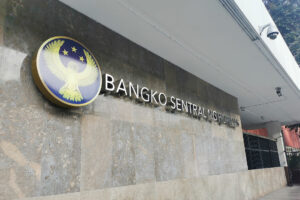




Monthly Economic Update: One for the road
 DOWNLOAD
DOWNLOAD

Inflation Update: Still low, still slow
 DOWNLOAD
DOWNLOAD

Philippines Trade Update: Exports momentum continues
 DOWNLOAD
DOWNLOAD


BSP still has room for one more rate increase

THE PHILIPPINE central bank still has room for one more rate hike as the pace of disinflation is expected to slow in the next few months, according to Fitch Solutions unit BMI.
On the other hand, HSBC Global Research expects the BSP to keep rates steady for a “prolonged period of time.”
In a commentary released on Monday, BMI said the Bangko Sentral ng Pilipinas (BSP) decision to leave its key policy rate untouched at 6.25% at its May 18 meeting is only a “pause, rather than an end to the monetary tightening cycle.”
“For now, we are holding on to our forecast for the policy rate to be hiked at least once more by 25 bps to a terminal rate of 6.5%,” it said.
BMI expects the Monetary Board to hike rates again at its June 22 meeting.
“While we think that inflation will remain on a broad downward trend through end-2023, the pace of disinflation will likely slow,” it said.
Inflation has been on a downtrend since the peak of 8.7% in January. In April, inflation eased to 6.6% from 7.6% in March. This brought the four-month average to 7.9%, well above the central bank’s 2-4% target.
Last week, the BSP cut its inflation rate projections to 5.5% this year from 6% previously.
BMI said inflation would only likely subside by the fourth quarter of this year.
“On the downside, if inflation remains on a downward trend and the US Federal Reserve pauses its rate hiking cycle, the BSP may decide to keep rates on hold for the rest of the year,” it said.
BMI also flagged growing upside risks to inflation, such as the looming El Niño weather event that may disrupt food supply and push prices higher.
The state weather bureau forecasts that the El Niño weather pattern has a high likelihood of occurring in the next three months and will persist until the first quarter of next year.
“Furthermore, currency weakness induced by the US Federal Reserve’s aggressive tightening cycle partially drove the BSP towards steep rate hikes in 2022 to safeguard currency stability, and we think that this concern may resurface again in the near term,” BMI said.
The Fitch Solutions unit expects the Fed to deliver a 25-bp rate hike at its June 13-14 meeting, bringing its policy rate to 5.5%.
BMI said slower economic growth could “set the stage for the policy rate to be left on hold.”
It projects the Philippine economy to grow by 5.9% this year, slower than 7.6% in 2022 and below the government’s 6-7% target.
“We think the economic slowdown will be driven by lackluster global demand and the lagged impact of domestic monetary tightening,” it added.
PROLONGED PAUSE
In a report, HSBC economist for ASEAN Aris Dacanay said the BSP would “only begin cutting rates after keeping monetary policy steady for a year.”
“More specifically, we expect the BSP to cut the policy rate by 25 bps to 6% in the third quarter of 2024 and by another 25 bps to 5.75% in the fourth quarter of 2024,” he added.
Last week, BSP Governor Felipe M. Medalla signaled a long, extended pause on interest rates, saying the pressure to cut “is not so high.”
“Furthermore, the pause seems to be a hawkish one. Although Mr. Medalla said that the BSP will ‘unlikely cut or raise rates’ in the next two to three meetings, the BSP also said in the official press release that it stands ready to tighten monetary policy further if threats to inflation emerge,” Mr. Dacanay added.
He said the BSP is unlikely to cut rates earlier than the Fed because this might “put downward pressure on the peso and in turn, fuel inflationary pressures.”
“The national saving rate has not yet normalized. As previously argued, the saving rate has not yet recovered to pre-pandemic levels. Keeping a tight monetary stance for a prolonged period of time should help incentivize saving, which in turn could bring back domestic and external balance,” he added.
HSBC also expects the BSP to cut banks’ reserve requirement ratio by 200 bps to 10% in July.
Mr. Medalla earlier said the BSP is considering cutting banks’ reserve ratios within the year to help loosen monetary conditions.
The BSP is targeting to bring down the ratio for big banks to single digits this year.
The ratio for big banks is 12%, one of the highest in the region. Reserve requirements for thrift and rural lenders are 3% and 2%, respectively. — Luisa Maria Jacinta C. Jocson
This article originally appeared on bworldonline.com





 By BusinessWorld
By BusinessWorld